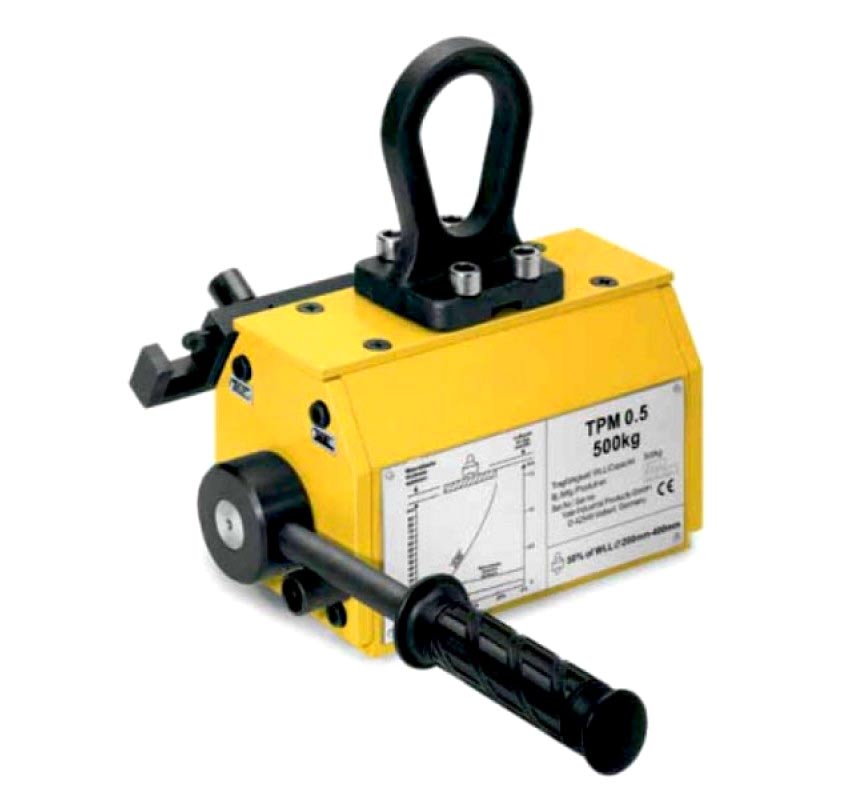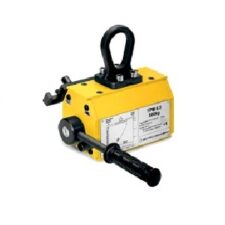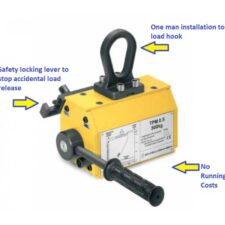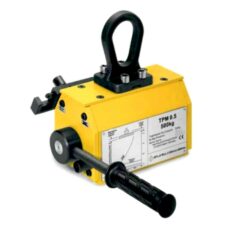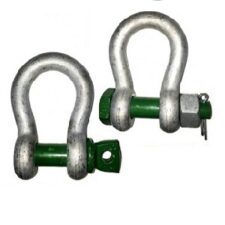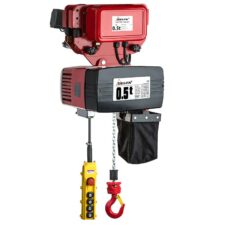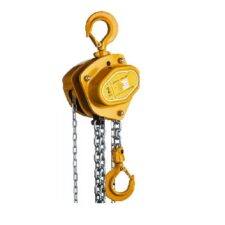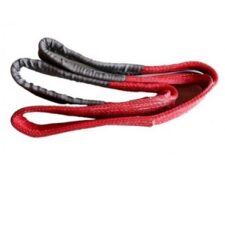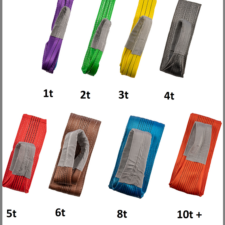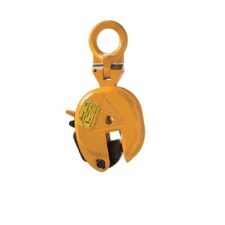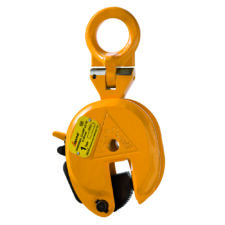Yale Magnetic Lifters
£177.98 – £2,045.92Price range: £177.98 through £2,045.92
Do you handle steel sheets or other metals that are Ferro-magnetic?
Lift them the easy and safest way and invest in a magnetic lifter.
Our collection of magnetic lifters are the TPM ranger by Yale. They come in lifting capacities ranging from ½ a tonne or 100kg up to 2 tonne. Prices start from around £165.
About Yale Magnetic Lifters
One of the great things about Yale TPM magnetic lifters is that there are no running costs, what’s more, they can also be used to lift cylindrical objects (at a reduced capacity) not just flat sheets.
They are easy to install thanks to the large lifting eye, simply attach to your lifting hoists load hook.
To use the magnetic lifter you simply place it onto the load and lock down the lever to activate the magnetic field. There is also a safety locking device to prevent accidental release. When the lever is locked on the connection is permanent until released. This is why these magnets are sometimes referred to as permanent lifting magnets.
More than one magnet can be used on the same load, this is ideal if the load is large as it will help the load remain stable during the lift as long as the magnets are positioned equally around the centre of gravity.
Using Magnetic Lifters Safely
There are a number of cautions to consider when using lifting magnets which can affect the holding capacity and thus safety.
Contact Area
This relates to the condition of the surface area that makes contact with the magnet. It should be smooth and clean. Uneven or warped surfaces, holes, pitted surfaces, dust and grime, oil and paint reside can all affect the connection between the magnet and load.
Trial lifts should always be performed to ensure the load is held securely.
Air Gaps
When the surface is affected by the above mentioned criteria, air gaps can occur. This is because the full magnet area cannot make contact with the whole surface area on the load.
Sometimes machined surfaces that do not have the ideal finish can also create air gaps. Sometimes air gaps are unavoidable so the magnetic lifters capacity should be downgraded according to the amount of gaps. Always consult the user manuals and manufacturers instructions.
Material size & Load Thickness
The thickness of the flat sheet materials you will be lifting is of paramount importance. Each size of magnetic lifter has a different minimum thickness permitted in order to obtain the maximum working load limit. For example the 100kg model has a minimum permitted thickness of 15mm whilst the largest 2000kg model it is 55mm.
There is also a maximum load length that one magnet is able to handle, you can find out the specifics in the specification sheet above.
When using the Yale TPM magnetic lifters for cylindrical loads a different set of criteria ensues. For instance the rated capacity for your magnet will be reduced by half. This is due to the smaller contact area between the lifting magnet and load, see the specs for full details.
Magnetic Lifter Maintenance
Minimal maintenance is required for magnetic lifters. The contact magnet area must be kept clean and debris free. Other than that you should have a thorough inspection carried out every 12 months in accordance to LOLER advice and regulations. These inspections ensure your magnet is working as it should and is safe to use. They also provide you with the necessary certification paperwork for your records, essential should health and safety come calling.
More Steel Plate Lifting Gear
Magnetic lifters, although extremely useful plate lifting gear are not always the best option. You may also wish to consider plate lifting clamps for flat sheets, where the surface condition is less of an issue. They do however, have a set of material hardness criteria and minimum load capacities. Our Delta plate clamps are universal in design so can lift in both orientations and aid in lifting and turning sheets.
| Weight | 8 kg |
|---|---|
| Model/SWL (TPM) | TPM 0.1 / 100KG, TPM 0.3 / 300KG, TPM 0.5 / 500KG, TPM 0.8 / 800KG, TPM 1.0 / 1000KG, TPM 2.0 / 2000KG |







